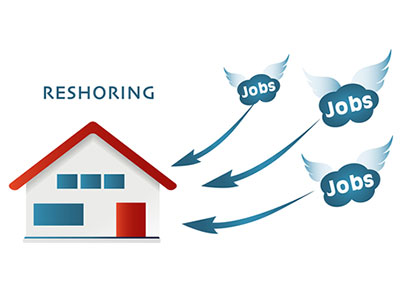

Status of the Medical / Healthcare Supply Chain
The supply chain has calmed down since the height of the pandemic; however, smart manufacturers are thinking ahead to changing conditions. Geopolitical risks are at an all-time high. The Russia-Ukraine war rages on and Israel and Hamas are at war which has spilled over to the Iran-backed Houthis rebels attacking container ships in the Suez Canal, disrupting a major shipping lane.
Additionally, China continues to threaten Taiwan which produces 90% of the advanced computer chips for the world and an important component in medical devices. China is also being very aggressive in the region which could impact shipping lanes through the South China Seas, manufacturing in China and manufacturing in countries in the region. Since China dominates the medical device supply chain, this is concerning. Thus, proactive manufacturers are moving towards regional manufacturing. This trend started following the pandemic (refer to our quote in a MPO Medical Products Outsourcing article) and has been picking up steam.
Reshoring & Expanding Manufacturing Capabilities
According to Xometry’s Medical Industry Survey, medical device manufacturers are rapidly reshoring operations to strengthen their domestic supply chains. In fact, 67% of medical device manufacturers are in the process of reshoring operations within the next 12 months. There is a focused effort in rethinking supply chain strategies.
Although many companies are reshoring, executives remain concerned about the cost impact of expanding production in the USA. The good news is that labor costs have decreased as a percentage of total cost dramatically since the offshoring craze while other costs have increased, making reshoring more attractive. For example, transportation costs were heightened during the pandemic and have been impacted by the Panama Canal drought, the diversions of the Suez Canal, and other supply chain disruptions. The cost of capital has increased significantly with the increase in interest rates which has made the cost of carrying inventory much higher. And there are many other costs to consider in the total cost to produce. In fact, the total cost of product can be equivalent or even less in the USA in some non-commodity situations.
Many advancements have been made in manufacturing and technology. Companies are automating and digitizing their manufacturing and supply chain. For example, they are using 3D printing/ additive manufacturing, robotics, artificial intelligence with IoT, and other advanced technologies to improve efficiencies and enhance visibility. As manufacturers expand their manufacturing footprint, source new regional suppliers and reshore production, these advanced technologies maximize operational performance and minimize cost while maintaining and improving customer service levels with lower inventory levels. Thus, margin concerns are mitigated depending on the upgrades and improvements to the manufacturing process.
In the medical device industry, companies are starting to expand regional manufacturing in the USA. For example, Ascential Medical & Life Sciences is reshoring to Minnesota. Their new state-of-the-art facility has highly innovative automation solutions, making reshoring financially viable. Certainly, they are not alone. Companies are expanding operations in the USA.
Manufacturers are also nearshoring to the region. Mexico has expertise in medical devices and the ability to scale. Since customer requirements are significant in North America, the ability to scale in the US and Mexico is a relevant factor. The availability of advanced manufacturing and technical skills is also an important factor. Medical grade material supply can be sourced nearby, and the USA is ramping up computer chip manufacturing capabilities. For high labor component products, Mexico provides an excellent option because their labor rates are lower than China, and they benefit from the USMCA agreement between the two countries.
Although the USA and Mexico are great options with scale, there are additional medical device manufacturing hubs in other nearby countries. For example, Costa Rica has advanced skills, computer chip manufacturing, and therefore a thriving medical device manufacturing concentration. The Dominican Republic has medical device manufacturing, and Puerto Rico is known for pharmaceutical manufacturing.
Manufacturing Resurgence
There is no doubt that the successful companies will mitigate risk and manufacture regionally. Thus, the USA, Mexico and business friendly countries will experience a resurgence in manufacturing in the next decade. It will require investments in manufacturing, tooling, and other resources although there are opportunities to keep costs intact or even reduce total product cost.
The most successful companies will upgrade their processes, ERP systems, utilize advanced technologies, maximize customer and product profitability and proactively manage these opportunities with a SIOP (Sales Inventory Operations Planning) process. Assess your supply chain to learn how you stack up. Take our complimentary supply chain assessment. Upgrade, innovative, get ahead of the competition, and thrive.
If you are interested in reading more on this topic:
Why Manufacturing Matters and Will Thrive in the Next Decade


